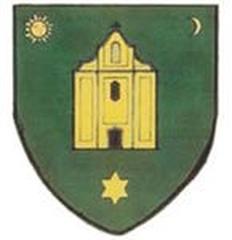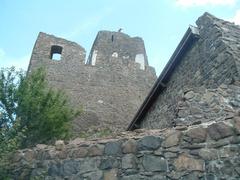
Comprehensive Guide to Visiting Kishartyán and Sóshartyán, Hungary
Date: 17/08/2024
Introduction
Nestled in the scenic Nógrád County of Hungary, the charming villages of Kishartyán and Sóshartyán offer a serene escape filled with natural beauty, historical sites, and traditional Hungarian culture. Kishartyán, first mentioned in the 16th century, is notable for its recovery from the Ottoman occupation and its eventual transformation into a culturally rich village with significant landowners like the Podmaniczky family (source). Sóshartyán, on the other hand, reflects the broader historical movements in Hungary influenced by the Habsburg monarchy, featuring the unique ‘settler’s Baroque’ architecture brought by German settlers in the 18th century (source). Both villages are part of the Palóc region, known for its distinctive folk traditions, dialect, and traditional attire, making them excellent destinations for those eager to experience authentic Hungarian rural life.
Strategically located between the northernmost ranges of the Cserhát Mountains and the Karancs, these villages are part of the Novohrad-Nógrád UNESCO Global Geopark, offering a haven for nature enthusiasts with activities like hiking, bird watching, and geological tours (source). The villages are easily accessible via the 22nd main road, making them feasible day trip destinations from Budapest, approximately 82 kilometers northeast. Whether exploring the geological wonders, delving into historical sites, or immersing in local culture, these villages offer a unique and authentic experience for every traveler.
Table of Contents
- Introduction
- Historical Background
- Geographical Significance
- Cultural Heritage
- Attractions and Activities
- Visitor Information
- FAQ
- Conclusion
Historical Background
Kishartyán
Kishartyán’s history dates back to the medieval period, first mentioned in records in the 16th century. The village was destroyed during the Ottoman occupation in the mid-16th century and was later part of the Szécsény sanjak. By the early 18th century, the village had only five Hungarian households, indicating slow recovery from earlier devastation. Ownership changes in the 19th century saw notable figures like Horváth György and Bay Ferenc among its proprietors. The Podmaniczky family and Kandó Aladár were also significant landowners, with the latter owning the Kőkút-pusztai manor built by Baron Podmaniczky Mihály.
Sóshartyán
Sóshartyán’s history is deeply intertwined with the broader historical movements in Hungary, particularly the settlement patterns influenced by the Habsburg monarchy. During the 18th century, the Habsburgs encouraged German settlers to migrate to Hungary, leading to the establishment of over 800 villages, including those in the Banat Province (source). This period saw the rise of “settler’s Baroque” architecture, a modified Baroque style that became characteristic of these new settlements.
Geographical Significance
Location
Strategically located between the northernmost ranges of the Cserhát Mountains and the Karancs, Kishartyán and Sóshartyán are part of the Novohrad-Nógrád UNESCO Global Geopark. This positioning offers stunning natural landscapes and diverse geological features, making it a haven for nature enthusiasts.
Accessibility
The villages are easily accessible via the 22nd main road, connecting them to Balassagyarmat, Szécsény, and Salgótarján. The 21 134 secondary road also intersects the area, providing further connectivity to neighboring towns like Magyargéc and Nógrádmegyer. From Budapest, the villages are approximately 82 kilometers northeast, making them feasible day trip destinations.
Cultural Heritage
Folk Traditions
Kishartyán and Sóshartyán are part of the Palóc region, known for its distinctive folk traditions, dialect, and traditional attire. The villages celebrate their cultural heritage through various local festivals and events, attracting visitors eager to experience authentic Hungarian rural life.
Festivals and Events
Local festivals in both villages feature Palóc music, dance, and cuisine, offering immersive cultural experiences. Community centers and local organizations ensure these events preserve and promote the unique cultural identity of Kishartyán and Sóshartyán.
Attractions and Activities
Novohrad-Nógrád UNESCO Global Geopark
The inclusion of Kishartyán in the UNESCO Global Geopark makes it a prime destination for nature enthusiasts. Activities include hiking, bird watching, and geological tours, exploring diverse landscapes featuring volcanic formations and rich biodiversity.
Kishartyáni Kőlyuk-oldal
One of Kishartyán’s main attractions is the Kishartyáni Kőlyuk-oldal, a stunning sandstone cliff formed during the Oligocene epoch. Visitors can explore the cliff via a steep staircase that leads to caves carved into the sandstone (source).
Jézus Szíve Church
Located in Sóshartyán, the Jézus Szíve (Sacred Heart of Jesus) Church is a neogothic structure built in 1906. This church is not only a place of worship but also a significant cultural and historical monument that offers panoramic views of the surrounding landscape (source).
Local Architecture
The architectural landscape of Sóshartyán is a testament to its historical roots, featuring buildings that reflect the “settler’s Baroque” style, characterized by ornate designs and unique decorative finishes (source).
Visitor Information
Visiting Hours and Tickets
Kishartyán is open to visitors from 9 AM to 5 PM daily. Tickets cost $5 for adults and $3 for children. Entry to Sóshartyán and most of its natural attractions is free of charge. However, certain sites like the Jézus Szíve Church might request a small donation for maintenance.
Getting There
Accessible by road via the 22nd main road, public transportation options include intercity bus services (routes 1010, 1012, 3072, 3075, 3080, 3081, and 3082). From Budapest, the villages are approximately 82 kilometers northeast, making them feasible day trip destinations.
Accommodation
While Kishartyán and Sóshartyán have limited accommodation options, nearby towns like Salgótarján and Szécsény offer hotels, guesthouses, and bed-and-breakfast establishments. Rural homestays provide an immersive experience of local hospitality and culture.
Local Cuisine
Visitors can enjoy rich and flavorful Hungarian dishes like goulash, pörkölt, and lángos. Experience traditional home-cooked meals at local guesthouses or small eateries in Kishartyán and Sóshartyán.
Best Time to Visit
The best time to visit is during spring and summer when the weather is pleasant, and outdoor activities are enjoyable. Blooming flowers and lush greenery enhance the scenic landscapes, and local festivals add to the vibrant cultural life.
Safety and Travel Tips
Kishartyán and Sóshartyán are generally safe for travelers, but common travel precautions should be taken. Check local weather forecasts before planning outdoor activities. For broader exploration, these villages’ proximity to destinations like the Old Village of Hollókő, a UNESCO World Heritage Site, makes them an excellent base for day trips.
FAQ
What are the visiting hours for Kishartyán and Sóshartyán?
- Kishartyán: 9 AM to 5 PM daily.
- Sóshartyán: Typically between 9 AM and 6 PM.
How much are the tickets for visiting Kishartyán?
- Kishartyán: $5 for adults and $3 for children.
- Sóshartyán: Entry is generally free, but some sites might request a small donation.
Are there guided tours available?
- Guided tours can be arranged by contacting the local community center.
Is accessibility available for differently-abled visitors?
- While some areas may be challenging, efforts are being made to improve accessibility. Contact local authorities for specific assistance.
Conclusion
Kishartyán and Sóshartyán offer a unique blend of natural beauty, cultural heritage, and peaceful countryside charm. From exploring the geological marvels of the Novohrad-Nógrád Geopark to admiring the neogothic Jézus Szíve Church, visitors are treated to an immersive experience that highlights the essence of Hungarian rural life. Embrace sustainable tourism and preserve local traditions to keep these hidden gems thriving. For more travel tips and updates, download our mobile app Audiala and follow us on social media.

